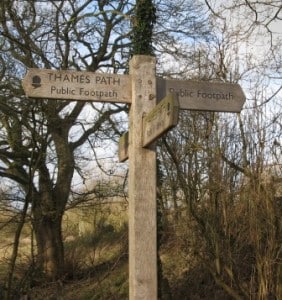Support us from £3/month
We deal with almost 1000 cases a year assisting communities, groups and individuals in protecting their local spaces and paths in all parts of England and Wales. Can you help us by joining as a member?
The legal rule that a path becomes a right of way after 20 years’ unhindered public use is 80 years old today (1 January). The Rights of Way Act 1932 came into effect on 1 January 1934 and applied throughout England and Wales.
We celebrate the eightieth anniversary of this milestone act of parliament for walkers, riders and other path users. Our society played a seminal role in the passage of this act which made it easier for the public to claim routes as public paths. The society first drafted the bill in 1906; this became the 1932 Act.
The act introduced the rule that members of the public could claim a route as a public path if they could prove 20 years’ use, without interruption or challenge. Before this there was no simple rule for the time over which a route had to be used before it could be regarded as public.
Legal standard
The 20-years’ use rule remains the legal standard today: ‘a vital milestone in the long struggle for public access to the countryside,’ says Kate Ashbrook, our general secretary. ‘To this rule we owe thousands of public paths.’
The Rights of Way Act 1932 also benefited landowners, by introducing a provision (against the wish of the society) whereby landowners could rebut the presumption that a route had been dedicated as a public highway by posting notices on it. It would then be for the public to prove 20 years’ uninterrupted use, in order to claim a public highway there.
In addition, a landowner could deposit with the local authority a map and statement indicating which routes he admitted as public highways. Any routes not thus shown would need to be claimed by the public in order to gain the status of public highway. The map and statement had to be renewed every six years. This provision has remained in legislation ever since but was recently updated in favour of landowners so that the map and statement only need to be renewed every 20 years.
Encouraged
The society encouraged local authorities to carry out their own surveys of public highways and to record them on maps, and to check every map and statement deposited by landowners to see if existing public highways were being challenged. But it was not until the National Parks and Access to the Countryside Act 1949 that local authorities were required to prepare official maps of public paths.
Kate continues: ‘We are proud to celebrate the eightieth anniversary of the act in which our society played such an important part. With good reason we were known as the “People’s Watchdog”.
‘Landowners today claim that they suffer hardship when path-users find evidence of a right of way over their land. But if they and their predecessors had followed the provisions of the 1932 Act and subsequent legislation and deposited maps and statements of routes which they believed to be highways, there would be little opportunity now for surprises. They have only themselves to blame for failing to do this.’
Eighty years later the society and other members of the Stakeholder Working Group on Unrecorded Ways, which consists of representatives of path-users, local authorities, landowners and farmers, are encouraging the government to introduce legislation to improve further the process for claiming public paths. The society supports the draft Deregulation Bill which was published last year and contains many of the working group’s recommendations for reducing the burden on local authorities by streamlining the process for claiming paths and making it less contentious.

